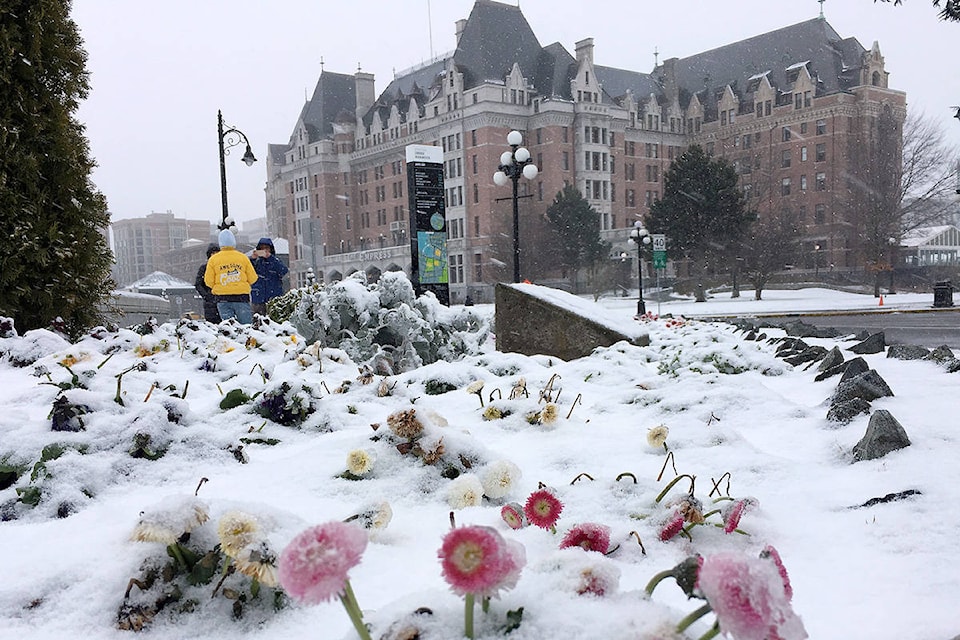Facebook users in Greater Victoria reported hearing thunder Tuesday night.
While thundersnow might sound like a made-up word, according to Bobby Sekhon, a meteorologist with Environment and Climate Change Canada, its an actual phenomenon.
RELATED: Meteorologist warns of potential drainage problems and collapsing roofs by end of the week
“Thundersnow is basically the same phenomena of a thunderstorm that gives you thundershower,” says Sekhon. “However, in this case, the atmosphere is cold enough that you’re going to get snow as the primary precipitation.”
Thundersnow is rare in B.C., according to Sekhon it’s more common in the Prairies or near the Great Lakes.
“If we see it in B.C., usually these situations are where we have a front move through with cold air behind and a relatively warmer ocean and basically you can get some shallow convection going enough to give a thunderstorm because the air aloft is cold enough,” explains Sekhon.
RELATED: Will winter weather and power outages lead to a baby boom in Greater Victoria?
In other words, you have all the same ingredients to make a thunderstorm just at colder temperatures.
With the snow accumulating over the past couple days, Islanders may have struggled to hear the thunder.
“The snow acts to suppress the sound of the thunder [so] you might not hear it from as far away,” says Sekhon. “In comparison to the summer thunderstorms where you can often hear [thunder] several kilometers away.”
And just like any good summer storm, thundersnow can lead to lightning as well.
